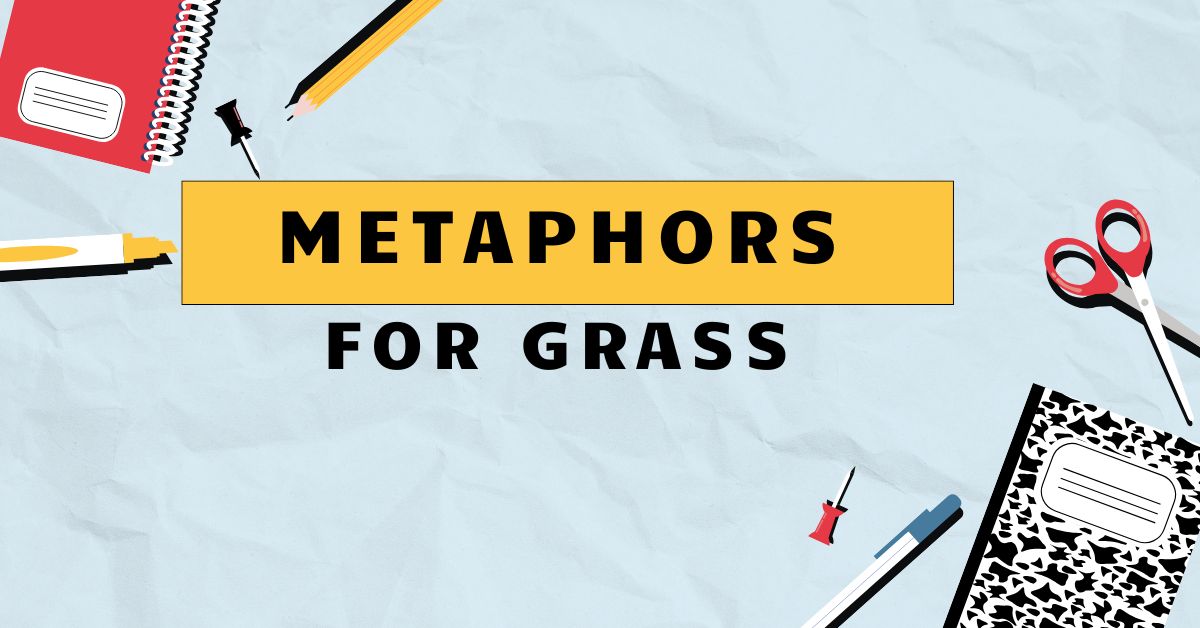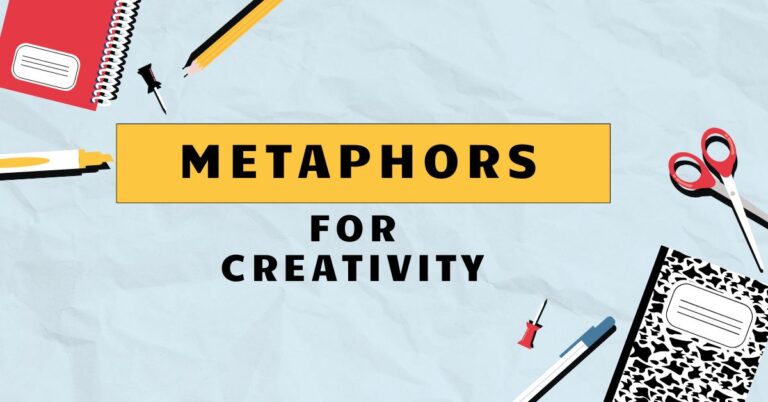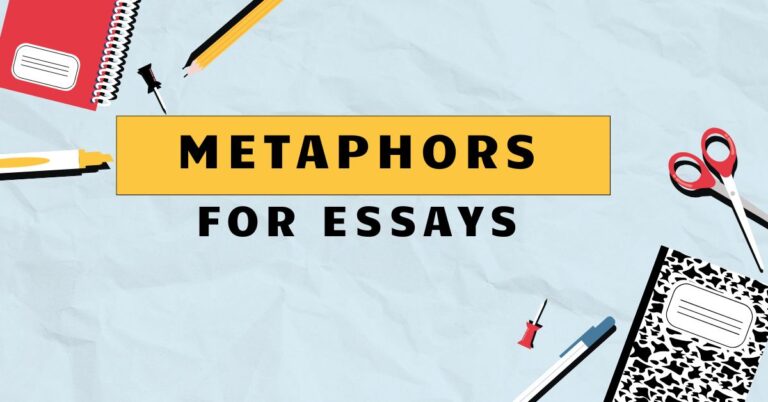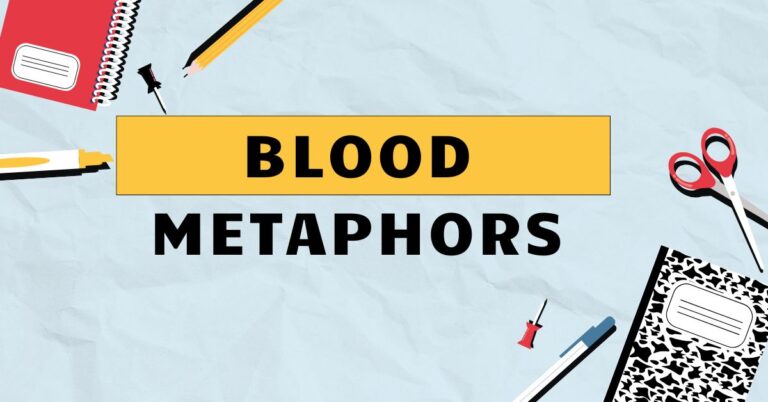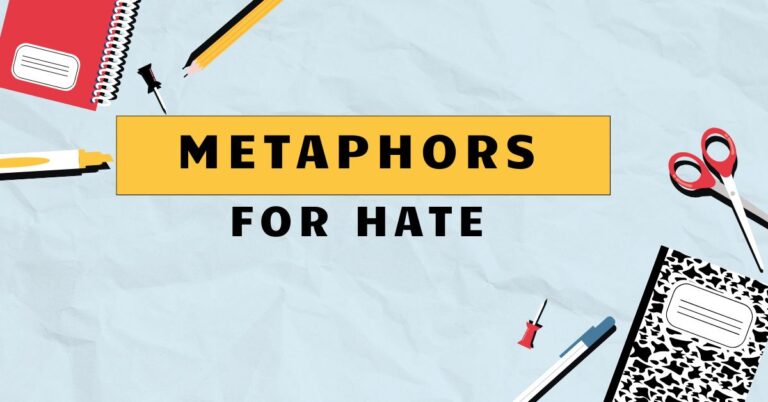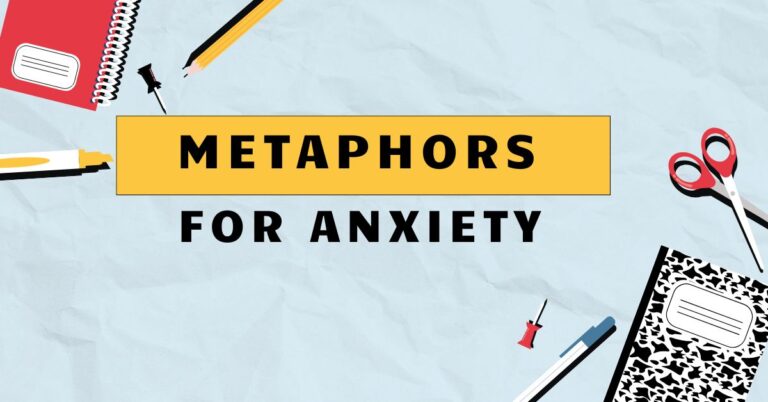49 Grass as Metaphor: A Deep Dive into Figurative Language
Metaphors are powerful tools that enrich our language, adding depth and layers of meaning to simple concepts. Using “grass” as a metaphor can evoke a wide range of ideas, from growth and resilience to fragility and transience.
Understanding how grass is used metaphorically enhances our comprehension of literature, poetry, and everyday communication. This article explores the various ways grass is employed as a metaphor, providing examples, usage rules, and practice exercises to help you master this figurative device.
This guide is perfect for students, writers, and anyone looking to expand their linguistic toolkit and appreciate the nuanced beauty of metaphorical language.
Table of Contents
- Introduction
- Definition of Metaphor
- Structural Breakdown of Metaphors
- Types of Grass Metaphors
- Examples of Grass Metaphors
- Usage Rules for Grass Metaphors
- Common Mistakes with Metaphors
- Practice Exercises
- Advanced Topics in Metaphor Usage
- FAQ
- Conclusion
Introduction
The English language thrives on figurative language, and metaphors are central to this vibrant expression. A metaphor is more than just a comparison; it’s a way of understanding one thing in terms of another, often unrelated, concept.
By exploring how “grass” can be used metaphorically, we unlock deeper insights into themes of nature, life, and human experience. This article provides a structured approach to mastering grass metaphors, equipping you with the knowledge and skills to recognize, interpret, and effectively use them in your own writing and communication.
Whether you’re a student analyzing poetry or a professional crafting compelling narratives, this guide will enhance your understanding and appreciation of metaphorical language.
Definition of Metaphor
Ametaphoris a figure of speech that directly compares two unrelated things, stating that one thing *is* another to highlight a shared quality. Unlike similes, which use “like” or “as” to make a comparison, metaphors assert equivalence, creating a more vivid and impactful image.
Metaphors function by transferring qualities from one concept (the source domain) to another (the target domain), allowing us to understand the target in a new light. In essence, it’s a way to see the world through a different lens, adding richness and complexity to our language.
Metaphors are classified as figures of speech and play a significant role in literature, poetry, and everyday communication. Their function is to create a deeper understanding, evoke emotion, and add color to language.
The context in which a metaphor is used is crucial for its interpretation. A metaphor about grass might mean something entirely different in a poem about nature compared to a political speech.
Structural Breakdown of Metaphors
Understanding the structure of a metaphor helps in its interpretation and effective usage. A metaphor consists of two main elements: thetenorand thevehicle.
The tenor is the subject being described, while the vehicle is the object or concept used to describe the tenor. The connection between the tenor and the vehicle is the shared characteristic that allows the metaphor to work.
For instance, in the metaphor “The grass is a blanket,” the tenor is “grass,” and the vehicle is “blanket.” The shared characteristic is the covering or enveloping quality. The structure can be represented as: Tenor IS Vehicle BECAUSE of Shared Characteristic.
Recognizing this structure enables us to dissect complex metaphors and appreciate their underlying meaning.
The effectiveness of a metaphor also depends on the audience’s understanding of both the tenor and the vehicle. A well-chosen metaphor resonates because it draws on familiar concepts to illuminate something less familiar.
The more vivid and evocative the vehicle, the more impactful the metaphor will be.
Types of Grass Metaphors
Grass, being a ubiquitous element of nature, lends itself to various metaphorical interpretations. Here are some common types of metaphors that utilize grass as a central image:
Growth and Renewal
Grass is often used to symbolize growth, renewal, and the cyclical nature of life. The image of grass springing back after being trampled or cut down represents resilience and the continuous process of regeneration.
This type of metaphor evokes feelings of hope and optimism.
Commonality and Uniformity
Vast expanses of grass can represent commonality, uniformity, and the idea of blending in. This metaphor is often used to describe societal conformity or the loss of individuality.
The image of countless blades of grass looking identical highlights the lack of distinction.
Fragility and Transience
While grass can symbolize resilience, it can also represent fragility and the fleeting nature of life. The image of grass withering or being easily destroyed highlights vulnerability and impermanence.
This type of metaphor often conveys a sense of melancholy or nostalgia.
Resilience and Persistence
The ability of grass to withstand harsh conditions and continue to grow makes it a powerful symbol of resilience and persistence. This metaphor is often used to describe individuals or communities that overcome adversity and maintain their strength.
The image of grass pushing through concrete embodies unwavering determination.
Deception and Concealment
Tall grass can be used to represent deception, concealment, or hidden dangers. This metaphor evokes a sense of unease and suggests that things are not always as they appear.
The image of something lurking in the tall grass creates suspense and anticipation.
Examples of Grass Metaphors
The following tables provide examples of grass metaphors categorized by their dominant theme. Each example is accompanied by an explanation of the metaphorical meaning.
The table below showcases examples of grass metaphors that emphasize growth and renewal. Notice how the image of grass is used to convey ideas of new beginnings, hope, and cyclical processes.
| Metaphor | Explanation |
|---|---|
| “Hope sprung up like new grass after the rain.” | Hope emerged quickly and vibrantly, just as grass grows rapidly after rainfall. |
| “Her spirit was like grass, always finding a way to grow back.” | Her spirit possessed a natural ability to recover and thrive, similar to grass regrowing. |
| “The project was green grass, full of potential.” | The project was new and promising, like fresh grass, indicating untapped possibilities. |
| “Their love was like grass in spring, fresh and vibrant.” | The love was new, energetic, and full of life, mirroring the vitality of spring grass. |
| “The economy is showing shoots of grass after the recession.” | The economy is beginning to recover and show signs of growth, like grass emerging from the ground. |
| “His ideas were like seeds in fertile grass, ready to sprout.” | The ideas were innovative and poised to develop quickly, as seeds do in rich soil. |
| “The community garden was a patch of green grass in a concrete jungle.” | The garden was a symbol of growth and life in an otherwise barren and lifeless urban area. |
| “The opportunity was a field of green grass, waiting to be explored.” | The opportunity was expansive and promising, offering numerous possibilities for discovery. |
| “After the conflict, peace grew like grass over the battlefield.” | Peace gradually covered the scars of war, symbolizing healing and renewal. |
| “The new initiative was like watering the grass, nurturing growth.” | The initiative supported and encouraged progress, similar to how water helps grass thrive. |
| “Her optimism was like grass, always pushing through the cracks.” | Her optimism was persistent, finding ways to flourish even in difficult situations. |
| “The artist’s creativity was like a field of wildflowers in the grass.” | The artist’s creativity was diverse and vibrant, adding beauty and color to the ordinary. |
| “The children’s laughter was like the sound of wind through the grass, refreshing and joyful.” | The children’s laughter was uplifting and invigorating, bringing happiness to those around them. |
| “Education is like tending the grass, ensuring a healthy future.” | Education nurtures and supports the development of individuals, contributing to a prosperous future. |
| “The company’s success was like a well-maintained lawn of grass, the result of consistent effort.” | The company’s success was the product of sustained hard work and dedication, leading to a thriving business. |
| “Forgiveness is like new grass, covering the wounds of the past.” | Forgiveness heals and helps to move on from past hurts, creating a fresh start. |
| “The young entrepreneur’s ambition was like grass reaching for the sun.” | The young entrepreneur’s ambition was strong and directed towards achieving great heights. |
| “The team’s morale was like grass after a long winter, finally greening up.” | The team’s morale was improving and becoming more positive after a difficult period. |
| “The project’s success was like a lush field of grass, a testament to hard work.” | The project’s success was a clear indication of the dedication and effort put into it. |
| “The fresh start was like a newly mowed lawn, clean and full of potential.” | The fresh start offered a sense of newness and opportunity, ready to be shaped and developed. |
This table illustrates how grass can be used to represent commonality and uniformity. The focus is on the collective aspect of grass, often highlighting a lack of individuality or conformity to societal norms.
| Metaphor | Explanation |
|---|---|
| “They were just blades of grass in the field, indistinguishable from one another.” | They were ordinary and unremarkable, lacking any unique characteristics. |
| “The crowd was a sea of grass, all swaying in the same direction.” | The crowd lacked individuality and followed the same trends or opinions. |
| “His voice was lost in the field of grass, unheard among the masses.” | His opinion was insignificant and ignored by the larger group. |
| “They all marched like grass in the wind, following the leader blindly.” | They obeyed without questioning, lacking independent thought. |
| “The company treated its employees like blades of grass, easily replaced.” | The company viewed its employees as disposable and interchangeable. |
| “She felt like a single blade of grass in a vast field, insignificant and alone.” | She felt unimportant and isolated within a larger context. |
| “The students were like grass in a well-manicured lawn, all conforming to the same standard.” | The students were pressured to meet specific expectations and suppress their individuality. |
| “The houses in the neighborhood were identical, like rows of grass in a lawn.” | The houses lacked unique features and followed a uniform design. |
| “The soldiers were like grass, mowed down in the prime of their lives.” | The soldiers were treated as expendable and sacrificed for a larger cause. |
| “The protesters were a field of grass, united in their cause but individually unknown.” | The protesters were a collective force, but their individual identities were obscured. |
| “The data points were like blades of grass, each contributing to the overall picture.” | Each piece of data was small and seemingly insignificant, but together they formed a comprehensive view. |
| “The members of the club were like grass, all sharing the same interests and values.” | The members were united by common passions and beliefs. |
| “The fashion trend spread like grass, with everyone adopting the same style.” | The trend became widespread, and people conformed to the prevailing fashion. |
| “The employees were like grass, all adhering to the same company policies.” | The employees followed the established rules and regulations without deviation. |
| “The voters were like grass, swayed by the same political rhetoric.” | The voters were influenced by persuasive language and propaganda. |
| “The tourists were like grass, all flocking to the same popular destinations.” | The tourists followed the established routes and visited the same attractions. |
| “The applicants were like grass, all possessing similar qualifications and experience.” | The applicants were difficult to distinguish due to their comparable backgrounds. |
| “The comments on the post were like grass, all expressing the same sentiment.” | The comments echoed a common viewpoint and lacked diverse perspectives. |
| “The opinions of the group were like grass, all growing in the same direction.” | The opinions were aligned and lacked dissenting voices. |
| “The citizens were like grass, all following the same laws and regulations.” | The citizens adhered to the established legal framework and social norms. |
This table presents examples of grass metaphors that highlight fragility and transience. The focus is on the delicate nature of grass and its vulnerability to external forces, often symbolizing impermanence and fleeting moments.
| Metaphor | Explanation |
|---|---|
| “Life is like grass, here today, gone tomorrow.” | Life is fleeting and temporary, similar to the short lifespan of grass. |
| “Their happiness was like grass in the summer heat, quickly withered.” | Their happiness was short-lived and easily destroyed by challenging circumstances. |
| “His dreams were like grass in the winter, dormant and seemingly dead.” | His dreams were temporarily inactive and appeared unlikely to revive. |
| “The memories faded like grass under the autumn frost.” | The memories gradually disappeared, similar to grass withering in the cold. |
| “Their love was as fragile as grass, easily trampled.” | Their love was delicate and vulnerable to external pressures. |
| “The beauty of youth is like grass, vibrant but fleeting.” | The beauty of youth is temporary and destined to fade over time. |
| “His promises were like grass in the wind, easily blown away.” | His promises were unreliable and lacked substance. |
| “The fame was as lasting as grass after mowing, quickly forgotten.” | The fame was short-lived and soon disappeared from public memory. |
| “The hope was like grass in a drought, struggling to survive.” | The hope was diminished and barely maintained in difficult conditions. |
| “Their relationship was like grass in a fire, consumed by conflict.” | Their relationship was destroyed by intense arguments and disagreements. |
| “The opportunity was as brief as grass in a desert, quickly gone.” | The opportunity was short-lived and easily missed. |
| “The joy was like grass covered in snow, hidden and suppressed.” | The joy was concealed and overshadowed by sadness or hardship. |
| “His patience was like grass underfoot, worn thin by constant demands.” | His patience was depleted and exhausted by persistent requests. |
| “The support was as reliable as grass in a storm, easily washed away.” | The support was unstable and quickly disappeared during times of trouble. |
| “Their optimism was like grass in a shaded area, never fully green.” | Their optimism was limited and never reached its full potential. |
| “The peace was as delicate as grass, easily disturbed by conflict.” | The peace was fragile and threatened by the possibility of renewed hostilities. |
| “His energy was like grass in the late fall, slowly fading away.” | His energy was decreasing and approaching exhaustion. |
| “The comfort was as temporary as grass after a light rain, soon evaporated.” | The comfort was fleeting and quickly disappeared. |
| “The moment was as fleeting as grass blowing in the wind, quickly passed.” | The moment was transient and soon gone. |
| “The happiness was like grass in a sandbox, constantly being disrupted.” | The happiness was unstable and frequently interrupted by challenges. |
This table includes examples of grass metaphors that emphasize resilience and persistence. The focus is on the ability of grass to withstand adversity and continue to grow, often symbolizing strength and unwavering determination.
| Metaphor | Explanation |
|---|---|
| “Her determination was like grass, always pushing through the cracks.” | Her determination was unwavering and found a way to overcome obstacles. |
| “They were as resilient as grass, bouncing back after every setback.” | They possessed a remarkable ability to recover from difficulties. |
| “His spirit was like grass, impossible to keep down.” | His spirit was indomitable and refused to be defeated. |
| “The community was like grass, growing stronger together despite the challenges.” | The community thrived and became more united through shared adversity. |
| “Their hope was like grass, always finding a way to sprout even in harsh conditions.” | Their hope persisted and emerged even in the most difficult circumstances. |
| “The small business was like grass, weathering every economic storm.” | The small business survived and persevered through economic hardships. |
| “Her love was like grass, enduring through all seasons.” | Her love was steadfast and remained strong regardless of the circumstances. |
| “Their commitment was like grass, deeply rooted and resistant to change.” | Their commitment was unwavering and unlikely to be altered. |
| “The project was like grass, slowly but surely taking root and growing.” | The project gradually progressed and established itself despite challenges. |
| “His faith was like grass, always green even in the driest times.” | His faith remained strong and unwavering even during periods of adversity. |
| “The team’s unity was like grass, with each blade supporting the others.” | The team members supported each other and worked together harmoniously. |
| “Their courage was like grass, covering the battlefield with hope.” | Their courage inspired hope and resilience even in the face of conflict. |
| “The artist’s passion was like grass, continually growing and evolving.” | The artist’s passion was constantly developing and expanding over time. |
| “The nonprofit’s mission was like grass, spreading its roots to help the community.” | The nonprofit’s mission extended its reach and impact to benefit the local community. |
| “Their determination to succeed was like grass, unyielding against all odds.” | Their determination was relentless and remained strong despite challenges. |
| “The inventor’s creativity was like grass, sprouting new ideas in every season.” | The inventor’s creativity consistently generated innovative concepts. |
| “The leader’s vision was like grass, providing a foundation for growth and stability.” | The leader’s vision offered a strong base for development and security. |
| “Their friendship was like grass, resilient and capable of weathering any storm.” | Their friendship was strong and able to withstand difficult times. |
| “The athlete’s dedication was like grass, always pushing for improvement.” | The athlete’s dedication constantly sought to enhance performance. |
| “The program’s success was like grass, thriving even in underserved areas.” | The program achieved success and flourished even in challenging environments. |
The following table provides examples of grass metaphors that highlight deception and concealment. The focus is on the ability of grass to hide or obscure something, often creating a sense of unease or anticipation.
| Metaphor | Explanation |
|---|---|
| “The truth was hidden in the tall grass, waiting to be discovered.” | The truth was concealed and required effort to uncover. |
| “Danger lurked in the grass, unseen but ever-present.” | An unseen threat was present, creating a sense of unease. |
| “The secret was buried deep in the grass, protected from prying eyes.” | The secret was carefully hidden and guarded from discovery. |
| “His lies were like grass, covering the truth with a deceptive facade.” | His lies obscured the truth and created a false impression. |
| “The predator hid in the grass, waiting for its prey.” | A threat was concealed, waiting for an opportunity to strike. |
| “The evidence was lost in the tall grass of bureaucracy, impossible to find.” | The evidence was obscured by complex procedures and regulations. |
| “Her true feelings were hidden like a snake in the grass, dangerous and concealed.” | Her true feelings were concealed and potentially harmful. |
| “The trap was hidden in the grass, waiting for the unsuspecting victim.” | A deceptive plan was concealed, designed to deceive someone. |
| “The hidden agenda was like grass, slowly covering the landscape of their intentions.” | The hidden agenda was gradually revealing itself and influencing their actions. |
| “The unsolved mystery was like a ghost in the grass, haunting the scene.” | The unsolved mystery lingered and created a sense of unease. |
| “The rumors spread like wildfire through dry grass, quickly consuming the truth.” | The rumors spread rapidly and distorted the truth. |
| “The conspiracy was like a root system in the grass, hidden but far-reaching.” | The conspiracy was concealed but had extensive influence. |
| “The unfulfilled promises were like buried seeds in the grass, never to sprout.” | The unfulfilled promises were forgotten and never realized. |
| “The forgotten memories were like fossils in the grass, preserved but unseen.” | The forgotten memories were preserved but not readily accessible. |
| “The hidden potential was like untapped resources in the grass, waiting to be discovered.” | The hidden potential was present but not yet realized. |
| “The underlying tension was like static electricity in the grass, ready to spark.” | The underlying tension was present and could potentially escalate. |
| “The unspoken truth was like a shadow in the grass, always present but often ignored.” | The unspoken truth was evident but often overlooked. |
| “The looming threat was like a storm gathering over the grass, imminent and unavoidable.” | The looming threat was approaching and unavoidable. |
| “The unresolved conflict was like a weed in the grass, choking the growth of peace.” | The unresolved conflict hindered progress and prevented harmony. |
| “The hidden resentment was like a burrow in the grass, undermining the surface.” | The hidden resentment was undermining the relationship or situation. |
Usage Rules for Grass Metaphors
Using grass metaphors effectively requires careful consideration of context and audience. Here are some key rules to follow:
- Ensure Relevance: The connection between grass and the tenor should be clear and logical. The shared characteristic should be easily understood by the audience.
- Avoid Clichés: While some grass metaphors are common, try to create fresh and original comparisons. Overused metaphors can lose their impact.
- Maintain Consistency: Once you establish a grass metaphor, maintain consistency throughout your writing. Avoid mixing metaphors or shifting the meaning of grass unintentionally.
- Consider Audience: Tailor your grass metaphors to your audience’s understanding and cultural background. A metaphor that resonates with one audience may not be effective with another.
- Use Sparingly: Metaphors should enhance your writing, not overwhelm it. Use them strategically to add depth and color, but avoid overusing them.
Exceptions:Poetic license allows for more creative and unconventional use of metaphors. In poetry, you can bend the rules to create unique and evocative imagery.
However, clarity should still be a consideration.
Common Mistakes with Metaphors
Here are some common mistakes to avoid when using metaphors:
- Mixed Metaphors: Combining unrelated metaphors can create confusion and weaken your writing.
- Incorrect: “He was a rising tide of anger, but he needed to nip it in the bud.” (Mixing water and gardening metaphors)
- Correct: “He was a rising tide of anger.” Or, “He needed to nip his anger in the bud.”
- Overused Metaphors: Using clichés can make your writing sound unoriginal and uninspired.
- Avoid: “The grass is always greener on the other side.”
- Try: “Their garden seemed a paradise compared to our barren lot.” (More specific and vivid)
- Unclear Metaphors: If the connection between the tenor and the vehicle is unclear, the metaphor will fail to resonate.
- Unclear: “His mind was grass.” (What aspect of grass is being compared?)
- Clear: “His mind was like a field of grass, open and receptive to new ideas.”
- Inconsistent Metaphors: Conflicting imagery can confuse the reader and undermine your message.
- Inconsistent: “The project was a promising field of grass, but it quickly turned into a tangled web.”
- Consistent: “The project was a promising field of grass, but weeds quickly began to choke its growth.”
Practice Exercises
Test your understanding of grass metaphors with these exercises.
Exercise 1: Identify the Metaphor
Identify the grass metaphor in each sentence and explain its meaning.
| Question | Answer |
|---|---|
| 1. “The children were running through a field of green grass, their laughter echoing like wind chimes.” | Metaphor: “field of green grass.” Meaning: The children’s joy and energy were abundant and vibrant. |
| 2. “His dreams were like grass in winter, dormant but full of potential.” | Metaphor: “grass in winter.” Meaning: His dreams were temporarily inactive but still held promise. |
| 3. “The protesters were a sea of grass, swaying in unison against the government.” | Metaphor: “sea of grass.” Meaning: The protesters were a large, unified group expressing their opposition. |
| 4. “Her resilience was like grass, always pushing through the cracks in the pavement.” | Metaphor: “grass, always pushing through the cracks.” Meaning: Her resilience was persistent and unwavering. |
| 5. “The secret was hidden in the tall grass of lies, difficult to find.” | Metaphor: “tall grass of lies.” Meaning: The secret was obscured by a complex web of deception. |
| 6. “Their love was as fragile as grass, easily trampled by harsh words.” | Metaphor: “fragile as grass.” Meaning: Their love was delicate and easily damaged. |
| 7. “The new opportunities were like a field of green grass, inviting us to explore.” | Metaphor: “field of green grass.” Meaning: The new opportunities were abundant and promising. |
| 8. “His optimism was like grass, always finding a way to grow, even in the shade.” | Metaphor: “grass, always finding a way to grow.” Meaning: His optimism was persistent and resourceful. |
| 9. “The team was as resilient as grass, bouncing back after every defeat.” | Metaphor: “resilient as grass.” Meaning: The team was able to recover quickly from setbacks. |
| 10. “The truth was buried deep, under the tall grass of deception.” | Metaphor: “tall grass of deception.” Meaning: The truth was hidden by a complex web of lies. |
Exercise 2: Complete the Metaphor
Complete the following sentences using a grass metaphor.
| Question | Answer |
|---|---|
| 1. The city’s parks were like _____, offering a respite from the concrete jungle. | The city’s parks were like *oases of green grass*, offering a respite from the concrete jungle. |
| 2. His memory of that summer day was as vivid as _____. | His memory of that summer day was as vivid as *dew-kissed grass in the morning sun*. |
| 3. The company’s growth was like _____, spreading rapidly across the market. | The company’s growth was like *wild grass*, spreading rapidly across the market. |
| 4. Her spirit was like _____, always finding a way to flourish despite the challenges. | Her spirit was like *unyielding grass*, always finding a way to flourish despite the challenges. |
| 5. The old house was surrounded by _____, a testament to its long history. | The old house was surrounded by *overgrown grass*, a testament to its long history. |
| 6. Their friendship was like _____, enduring through all seasons. | Their friendship was like *deep-rooted grass*, enduring through all seasons. |
| 7. The project’s potential was as vast as _____. | The project’s potential was as vast as *an endless field of grass*. |
| 8. The children played in the yard, their laughter as bright as _____. | The children played in the yard, their laughter as bright as *sunlight on the grass*. |
| 9. The election results were like _____, indicating a significant shift in public opinion. | The election results were like *a landslide of grass*, indicating a significant shift in public opinion. |
| 10. The artist’s creativity was as boundless as _____. | The artist’s creativity was as boundless as *a meadow of wild grass*. |
Advanced Topics in Metaphor Usage
For advanced learners, exploring extended metaphors and analyzing the cultural significance of grass metaphors can further enhance understanding. Anextended metaphoris a metaphor that is developed over several lines or even an entire work.
Analyzing the cultural connotations of grass in different societies can reveal deeper layers of meaning in literature and communication. For example, in some cultures, grass represents abundance and prosperity, while in others, it symbolizes poverty and neglect.
Another advanced topic is the use ofdead metaphors. These are metaphors that have become so common that they are no longer recognized as metaphors.
For example, “the foot of the mountain” is a dead metaphor. Recognizing and avoiding overusing dead metaphors can help you create more original and impactful writing.
FAQ
- What is the difference between a metaphor and a simile?
A metaphor states that one thing *is* another, while a simile uses “like” or “as
to make a comparison. Metaphors are more direct and assertive.
- How can I come up with original grass metaphors?
Observe grass in different contexts and consider its various qualities. Think about what grass reminds you of and what emotions it evokes. Try to connect these observations and feelings to other concepts.
- Are there any cultures where grass has a specific symbolic meaning?
Yes, in some cultures, grass symbolizes fertility and abundance. In others, it represents impermanence and humility. Researching these cultural associations can add depth to your understanding of grass metaphors.
- Can a grass metaphor be used in a negative way?
Yes, grass metaphors can be used to convey negative ideas such as fragility, deception, or conformity. The context and the specific qualities of grass being emphasized determine the overall tone.
- How do I know if my grass metaphor is effective?
An effective grass metaphor should be clear, relevant, and evocative. It should resonate with your audience and enhance their understanding of the subject you are describing. Test your metaphors on others to get feedback.
Conclusion
Metaphors are powerful tools for enriching language and conveying complex ideas. By understanding the various ways grass can be used metaphorically, you can enhance your appreciation of literature, improve your communication skills, and add depth to your writing.
Whether you’re using grass to symbolize growth, resilience, fragility, or deception, mastering these metaphors will undoubtedly elevate your linguistic abilities and allow you to express yourself with greater nuance and creativity. Continue to explore and experiment with grass metaphors, and you’ll discover endless possibilities for enriching your language and your understanding of the world around you.

